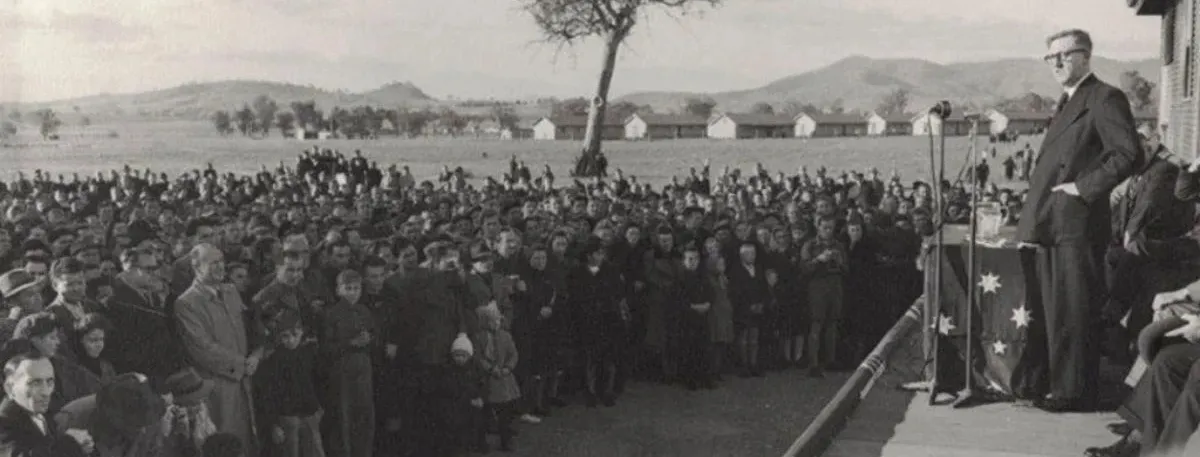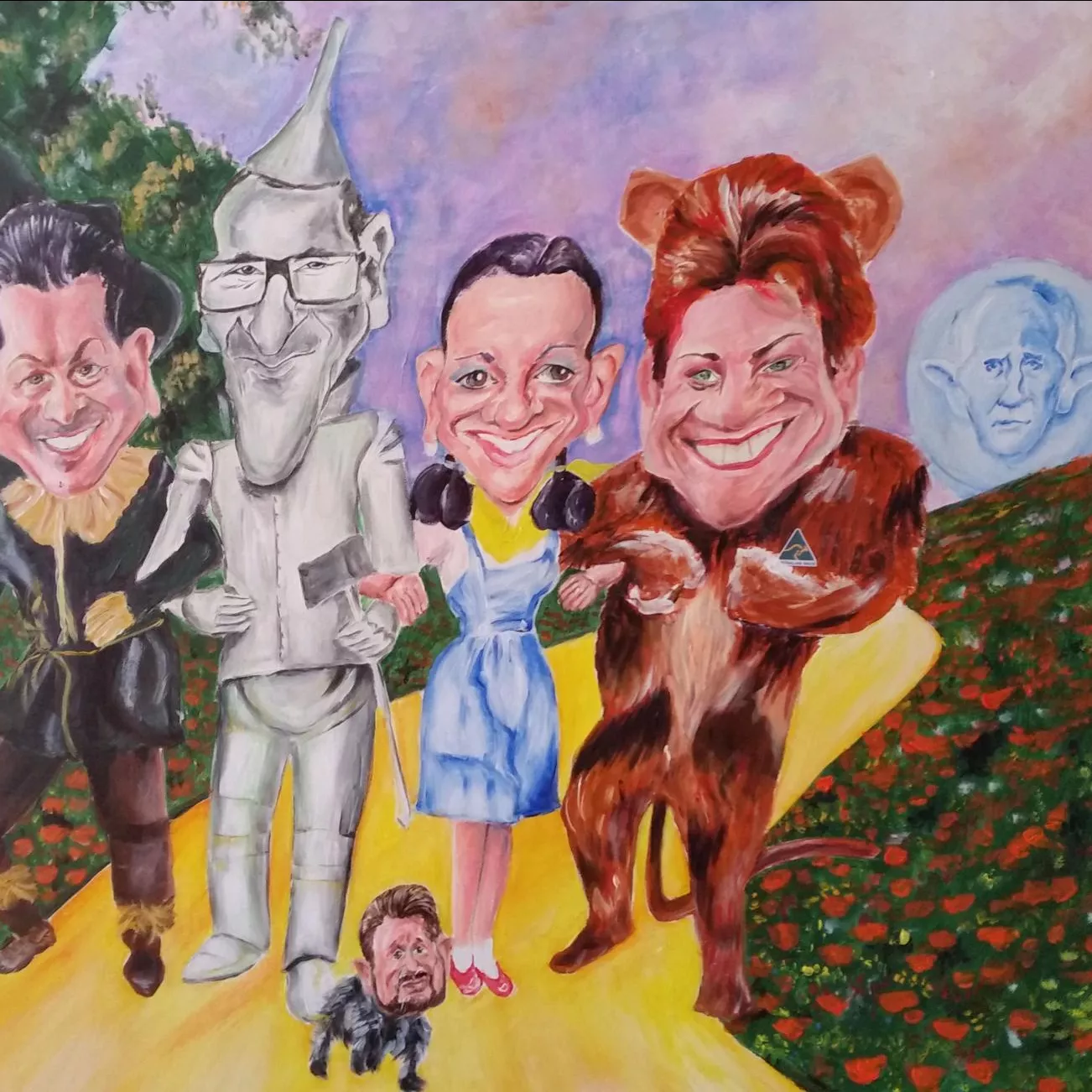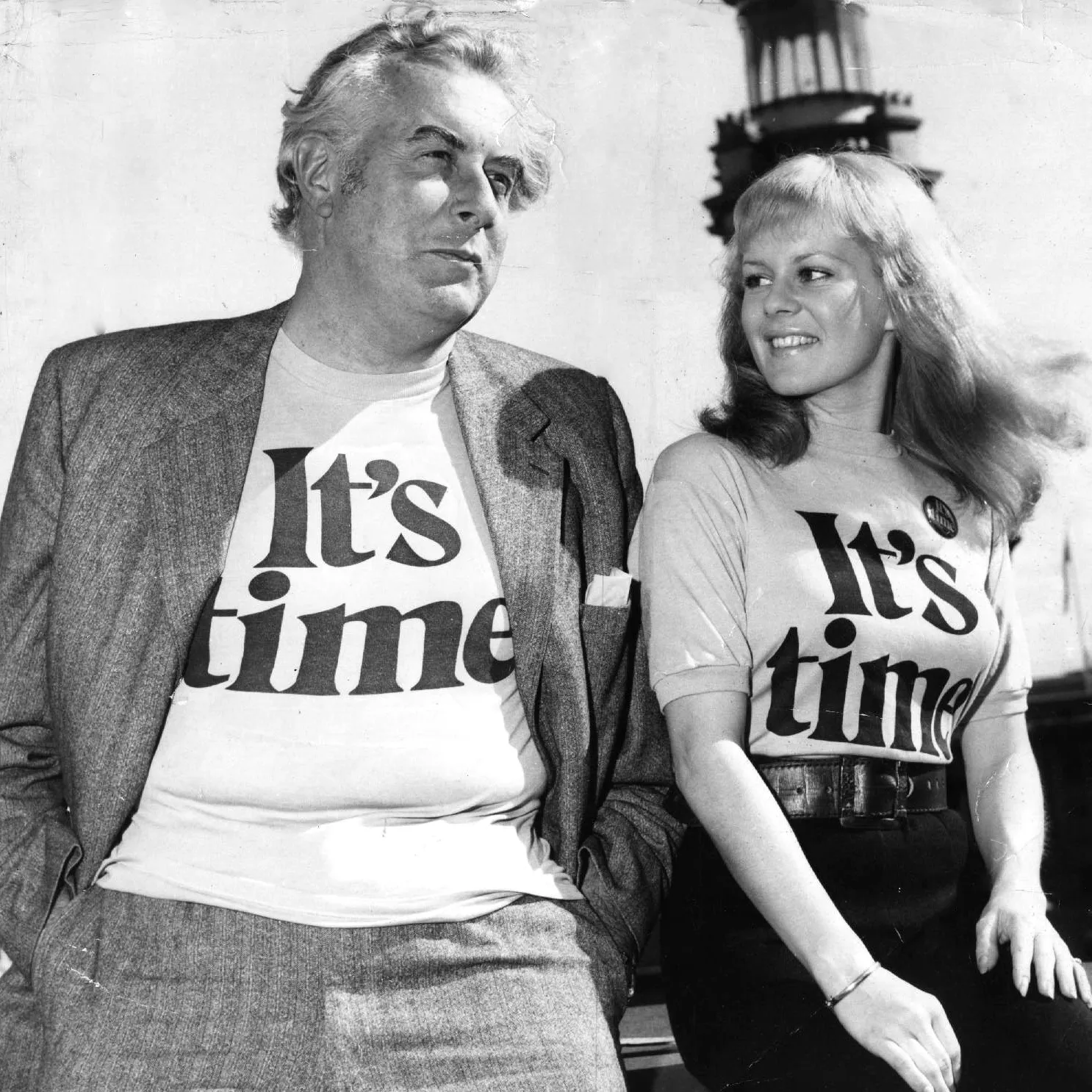Arthur Calwell and the gift of immigration
- DateMon, 28 Aug 2017
When Arthur Calwell addressed parliament as the first Australian Minister for Immigration on 2 August 1945, Australia was still at war.
He emphasised the importance of immigration for national development and defence, welcoming all people covered by existing legislation and rejecting campaigns of religious and racial intolerance that ‘made for the creation of discord and bitterness, harmful at home and abroad’. Australia’s population was 7.4 million with 250,000 available jobs and he used the slogan, ‘populate or perish’.
The Jewish News reported on 24 July that Calwell invited close relatives of Holocaust survivors to apply to come to Australia and for Jewish Welfare Societies to process these applications. The Jewish Community found ships and Australia has the largest proportion of survivors and descendants outside Israel. The Arthur A. Calwell Forest of Life was dedicated in Israel in 1998.
The Second World War ended on 15 August but repatriation of defence personnel was inhibited by shipping losses. Tasman Heyes became Departmental Secretary and Bob Armstrong, Calwell’s private secretary. An Australian International Labor Organisation delegation visit to Europe became an Immigration Advisory Committee which advocated emigration, and an Immigration Advisory Council was established.
British Commonwealth governments signed an agreement in March 1946 to provide free passage to Australia for British ex-servicemen and dependents, with a ten pound fare for other adult migrants. Benefits were extended to allied ex-servicemen. State premiers agreed and accepted responsibility for child migrants. In December, Cabinet approved an agreement with the Netherlands Emigration Foundation and in January 1947, the first group of British tradesmen arrived. In 1946, Australian women were granted the right to retain their nationality after marriage.
In March 1947, Calwell asked Cabinet to naturalise Chinese residents but it only agreed to modify regulations and ordered the decision be kept secret. There was post-war hostility to Asians. Calwell lobbied later governments and naturalisation was achieved in 1956.
In June 1947 the Calwells and Bob Armstrong visited 23 countries in twelve and a half weeks. Calwell met representatives of the United Nations Relief and Rehabilitation Administration and the IRO to discuss Displaced Persons from several countries and made arrangements with the British Shipping Conference to the end of 1952. On 21 July Calwell and A.J. Altmeyer, for the IRO, signed an agreement in Geneva ensuring no discrimination against DPs, the right to bring families, legal and political protection, Australian employment conditions and right to apply for citizenship. DPs agreed to work for two years, later reduced and never enforced. Political instability led to deferment of agreements with Italy and Greece.
The first group of Australian war brides with their American families arrived in September. On 7 December 843 DPs reached Melbourne and travelled to the reception centre at Bonegilla [near Albury]. Three thousand Maltese arrived in one year. New schemes were established and thousands of people were sponsored from several countries, including Lebanon.
In August 1949, two children, Maira Kalnins from Latvia, the 50,000 DP, and Isobel Saxelby from Scotland, the 100,000 British migrant, were welcomed to Australia. Calwell presented each girl with a doll, posy of wattle and toy koala. Their brothers received a toy kangaroo and Australian Rules football.
Australian citizenship was promulgated on Australia Day 1949. Calwell introduced the term ‘New Australian’ and Good Neighbour Councils. Robert Menzies said Calwell’s achievement in persuading the ALP and unions to accept his scheme was ‘a bold and courageous action’. Geoffrey Blainey and Bob Hawke stated that immigration was the most important Australian political decision of the 20th century, while Jerzy Zubrzycki declared that Calwell was the father of multiculturalism.
In 1952, the Australian population, through births and immigration was 8.6 million.
Comment by Mary Elizabeth Calwell, 4 September 2017: Between January 1947 and June 1950, 58 per cent of Assisted Migrants were Displaced Persons quoted by the Secretary, Department of Immigration, R. E. Armstrong in an address, 'How It All Began', to ACT Good Neighbour Council, 24 August, 1972.

Arthur Calwell addressing new migrants at Bonegilla camp, 1 July 1949. Image: Mary Elizabeth Calwell







